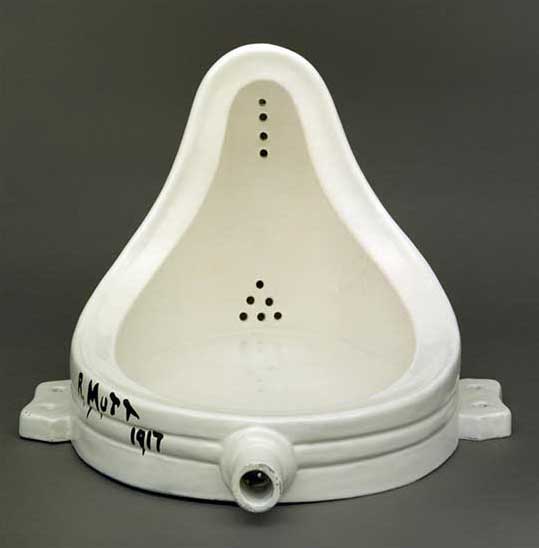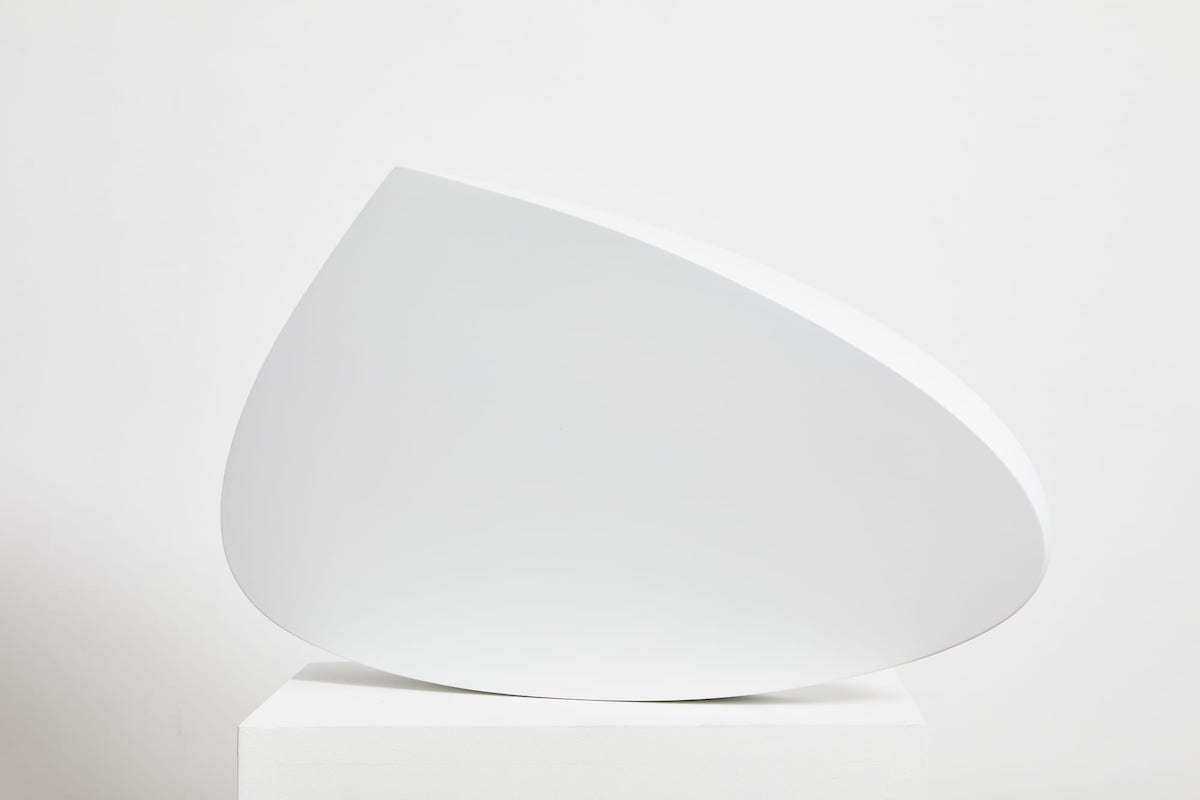
Marcel Duchamp, 'Fountain', (1917)
José Gabriel Fernández creates sculptures which exist as bodies. These achromatic forms possess no discernible human features, such as a head or limbs. Instead, they comprise smooth curvilinear lines, organically shaped as if to suggest a microscopic view of the human anatomy.
Fernández’s anthropomorphised structures are reminiscent of the widely revered Belvedere Torso, a classical marble statue of a male nude. Although the Belvedere Torso was violently mutilated – leaving the statue without a head, arms, or lower legs – it is unanimously understood as one of the most beautiful depictions of the human form. The classical sculpture is accepted as a perfect representation not only because it encapsulates the central force and muscular energy of the human figure, but because the broken body offers the viewer a chance to fulfil its deficiency. Revealing its vulnerability, the Belvedere Torso engages in dialogue with its viewer, who is able to mentally complete an image of its unattainable beauty. Thus, without the assistance of the viewer, the Belvedere Torso would remain perpetually fractured.
In this instance, Fernández’s own corporeal sculptures differ, displaying representations of the human form as unblemished and whole. Erotillo (2010) presents a small sculpture composed of elegant, flowing lines which effortlessly glide across the object’s surface. The sculpture appears both weightless and dense simultaneously, artfully playing with shadows that pool within its contours. So too, Erotillo references a torso through its wide brim tapering into a narrow arc. This torso, however, is undamaged and intact. Although it lacks the fragmentary nature of the Belvedere Torso, Erotillo is equally as powerful. While considering the sculpture’s smooth, powdery surface, the viewer is invited to acknowledge their own body. Breathing, pumping blood, supporting their weight – the viewer’s body is present and alive, contemplating an abstract representation placed before itself. Through this connection, the viewer is welcomed into an intimate relationship with Fernández’s sculpture, completing an insular cycle of affiliation.

Belvedere Torso, c. 2nd Century BC. Apollonius of Athens
In order to bookend Erotillo’s artistic and historical influences, we must reflect on its correlation with Marcel Duchamp’s controversial Fountain of 1917. Duchamp’s critical work consists of a readymade standard urinal rotated ninety degrees on its side, which has since attracted a plethora of academic attention. Within the extensive research on the object, Fountain has been accredited with multiple gendered, erotic readings which overlap our understanding of Erotillo. Indeed, Fernández himself admits to developing ‘erotic expressions of desire’ from the language of the 20th century avant garde. Some art historians perceive Fountain, a quintessentially masculine object, to hint at homoerotic sexual fascinations. Others decipher the urinal as a substitution of the female form. The smooth shape of its hollow interior suggests a uterine form, and its contoured surface implies the curves of a female body. Regardless of which analysis appears more legitimate, it is widely accepted that Duchamp’s Fountain exists as an anthropomorphic object. So too, Erotillo reinforces and augments our understanding of the human body. Indeed, Erotillo presents as genderless, with its pure white pigment and sinuous form suggesting life in its simplest condition. It remains sensual, however, referencing Fountain and the avant garde exploration of modern sexuality through its soft lines and curved form.
Erotillo, and Fernández’s wider collection works, reaches beyond the classical and avant garde. The initially unassuming sculpture engages the viewer in a profound relationship, encouraging them to consider the physicality of their own bodies. Erotillo is genderless, lacking a concrete form. Yet the sculpture maintains a meaningful reflection of the human body through its anthropomorphic structure and curvilinear surface
(By Eleanor Lerman)
